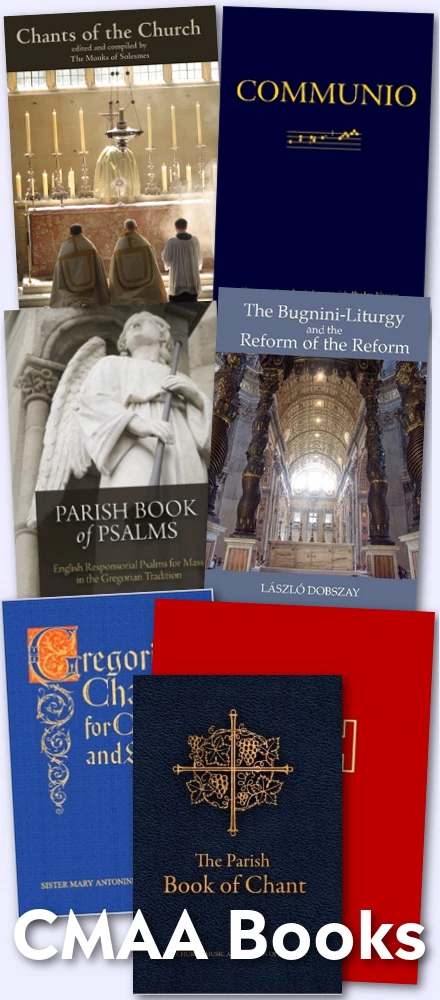I'm not sure where I got the idea that the late Monsignor Schuler of was an opponent of the old form of the Roman Rite and favored only an excellently done new form. That turns out to be not true; or, rather, the truth is more complicated. I was very interested to read this minature account of his views from this archival posting of Sacred Music, from 1984.
It is true that many of the changes introduced in the name of the Second Vatican Council did indeed surprise even the fathers of the council. It is true also that the introduction to the first edition of the missal of Pope Paul VI had to be withdrawn because it so poorly expressed the true nature of the Mass as a sacramental sacrifice. The representation of Christ's sacrificial death on Calvary was not clearly stated.
There seems little doubt, also, that many of the changes brought about by the new missal were greatly influenced by an ecumenical viewpoint that leaned heavily on Protestant sources. Chief among the objections raised against the new missal was the introduction of new prayers at the offertory. Equally opposed was the elimination of the Masses of the octave of Pentecost and Easter and other revisions of the calendar that resulted in so many ferial days. Unfortunately, the objections often overshadowed many good revisions, e.g. the end of the celebrant's repeating of words sung by the choir or the congregation; the addition of many new scripture readings; the end of the secret inaudibility of the celebrant's prayers; the demand for a more active role of the congregation; the simplification of many ceremonial details, etc.
The greatest problem of the new missal, at least in English-speaking countries, lay in the miserable translation that was imposed upon priests and people. Many prayers were so mistranslated that a student of first-year Latin would have done better. The vulgarity in the scriptural texts was resented. Some translations, especially of the Credo, were even theologically suspect. An obvious effort to promote certain doubtful theological positions colored the English language editions of the missal of Paul VI and weakened the whole reform in the judgment of many good Catholics.
Worst of all was the determination on the part of those who wished to promote the reforms to outlaw immediately the old missal, as if they were fearful that it would be a competition to the new and perhaps even prove to be too powerful a competition with the result that the new books would not be accepted. After all, there had never been a grass roots ground-swell for the vernacular; the Catholic people had not demanded liturgical reforms; the reforms came chiefly from the clergy, and at that, only a small percentage of the world's priests or bishops. Imposition of the new, therefore, required in the minds of some the immediate destruction of the old. How many convents, schools and even parishes burned the old Missale Romanum of Pius V as if it were a bad book!
Along with the rejection of the Mass of Pius V came an unreasonable and totally irresponsible attack on the Latin language, without any foundation in the decrees of the council or the documents that followed. (Cf. Entry "Latin" in the index of Documents on the Liturgy, 1963-1979, Liturgical Press, Collegeville, MN 56321.) Latin was said to be prohibited. Music set to Latin texts was forbidden, despite all the legislation to the contrary. This totally false notion continues to be widespread among both clergy and people despite its lack of any basis in authoritative legislation.
Another fable introduced by the promoters of a new rite was the error that the new Mass had to be celebrated versus populum at a table altar erected near the congregation. Old altars were removed, even against the wishes of the people; new table altars were set up, some very poorly designed and even unworthy of the Mass celebrated on them. To promote the use of the altar versus populum, the English translation of the new missal of Paul VI even mistranslates the Latin original or leaves out entirely the rubrics of the Missale Romanum which in at least five places indicates that the priest should turn toward the people to say "The Lord be with you,"
"Pray brethern," "This is the Lamb of God," etc. The Latin has sacerdos conversus ad populum dicit, but the English takes no notice of conversus which clearly means "having turned toward the people." The norm for the new missal of Pope Paul VI is the priest at an altar which is not versus populum.
Furthermore, the altar versus populum is not a new idea brought in by the reforms of Paul VI. The Mass could always be celebrated with the priest facing the people, as indeed it was in Rome and in many other places for centuries. True, it was not the usual way, but it did exist.
Now, part of the conspiracy against the Mass of Pius V and the Latin language involved a confusing of priests and people. The effort was made, and still continues, to associate Latin exclusively with the Mass of Pius V. The altar versus populum is associated with the missal of Paul VI. Latin is called "old," and versus populum "new." The over-simplification causes error and misunderstanding.
The truth is that the new Mass of Pope Paul VI may be celebrated in Latin or in the vernacular; it may be celebrated at an altar versus populum or at an altar of traditional construction. So also, the old Mass of Pius V was often celebrated in Latin and in the vernacular; it was celebrated both versus populum and at traditionally oriented altars. There cannot be a reduction of Latin to "old" and the vernacular to "new." There cannot be an equation of versus populum with "new" and the traditional altar with "old."




















